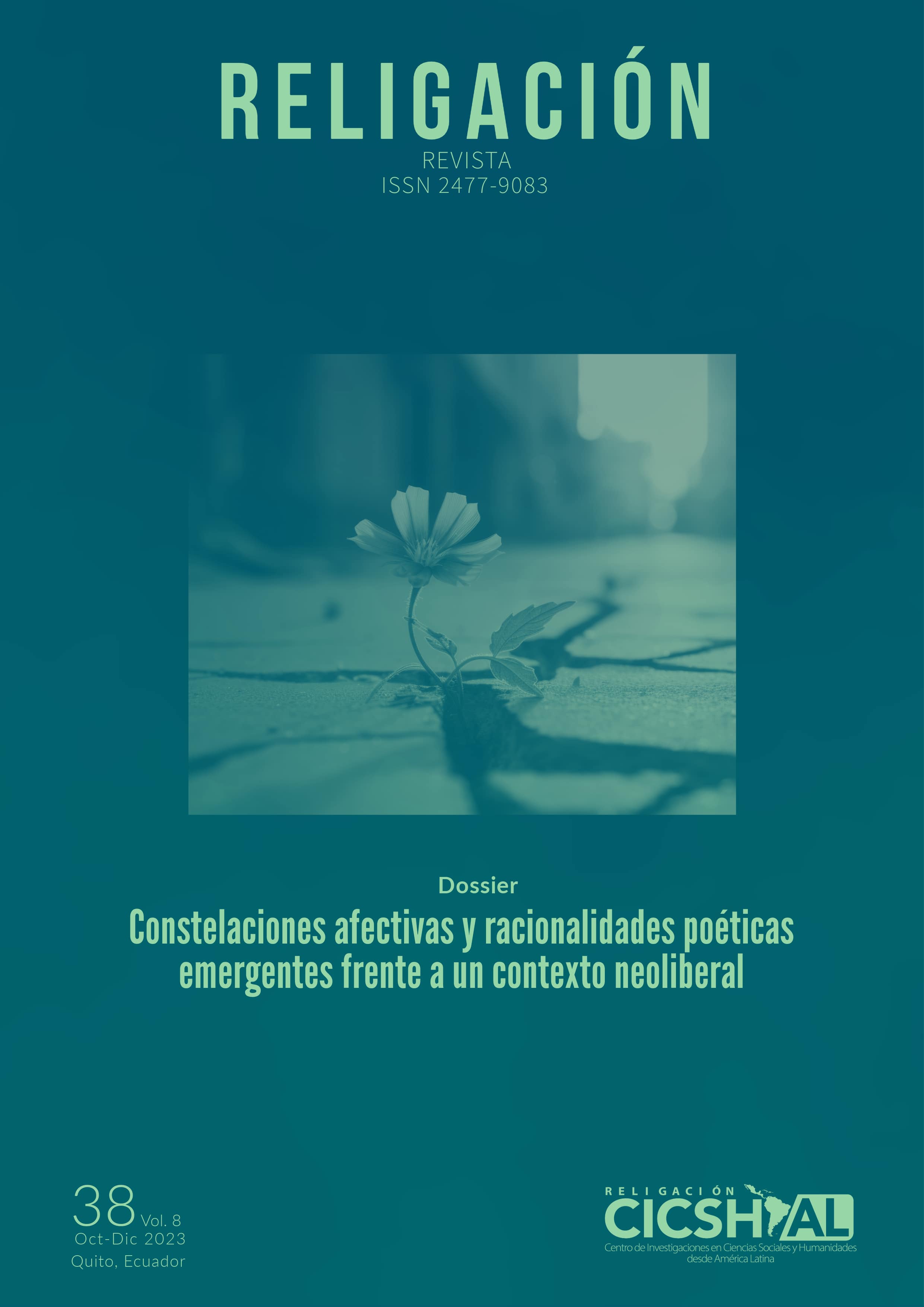Categorización de materiales autoregenerantes y su aplicación en la construcción arquitectónica en la ciudad de Quito, Ecuador
Resumen
Los materiales de autorreparación o autoregenerantes tienen la capacidad de reparar y regenerar su estructura interna. Esta tecnología en desarrollo tiene el potencial de aumentar la durabilidad y la vida útil de las estructuras en la construcción, al mismo tiempo que reduce los costos de mantenimiento y reduce el impacto ambiental. Según revisiones bibliográficas y estudios realizados en Quito, el uso de materiales autoregenerantes en la construcción puede brindar una solución a los problemas de fisuras y agrietamientos que son los más comunes en la construcción de edificaciones de la ciudad, esto debido a que Quito se encuentra ubicada en una zona de alta actividad sísmica y variables climatológicas constantes. Los estudios arrojaron que el uso de materiales autoregenerantes en la construcción tiene un alto potencial para mejorar la durabilidad y la vida útil de las estructuras de construcción, además de expandir una conciencia de sostenibilidad y reducción del efecto ambiental de los residuos que deja la construcción, el uso de materiales autoregenerantes puede ser una solución que mitigue en buena parte esta problemática.
Descargas
##plugins.generic.paperbuzz.metrics##
Citas
Agrawal, Y., Saxena, R., Gupta, T., & Sharma, R. (2017). Sustainable structures for smart cities and its performance evaluation. International Research Journal of Engineering and Technology, 4(6), 3095-3106
Aguiar Falconi, R. (2019). Peligrosidad sísmica de la costa norte de Ecuador y el terremoto de Pedernales de 2016. Revista Geofísica, (67), 9–24. https://revistasipgh.org/index.php/regeofi/article/view/159
Aguilar, M., & Saldaña, H. (2021). Bio-concreto con la Bacteria Bacillus Subtilis para el Diseño Estructural de Vivienda, Comas. [Tesis pregrado, Universidad César Vallejo]. Repositorio Institucional. https://hdl.handle.net/20.500.12692/90813
Balazs, A.C. (2007). Modeling self-healing materials. Materials Today, 10(9), 18–23. https://doi.org/10.1016/S1369-7021(07)70205-5
Banco Interamericano de Desarrollo. (2020). Perfil de riesgo de desastres por evento sísmico de Ecuador. https://doi.org/10.18235/0002852
Doostkami, H., Roig-Flores, M., & Serna, P. (2021). Self-healing efficiency of Ultra High-Performance Fiber-Reinforced Concrete through permeability to chlorides. Construction and Building Materials, 310, 125168. https://doi.org/10.1016/J.CONBUILDMAT.2021.125168
Feng, J., Rohaizat, R. E. B., & Qian, S. (2022). Polydopamine@carbon nanotube reinforced and calcium sulphoaluminate coated hydrogels encapsulating bacterial spores for self-healing cementitious composites. Cement and Concrete Composites, 133. https://doi.org/10.1016/j.cemconcomp.2022.104712
Gómez-Luna, E., Fernando-Navas, D., Aponte-Mayor, G., & Betancourt-Buitrago, L. A. (2014). Metodología para la revisión bibliográfica y la gestión de información de temas científicos, a través de su estructuración y sistematización. DYNA, 81(184), 158–163. https://doi.org/10.15446/DYNA.V81N184.37066
Gonzalez, A., Parraguez, A., Corvalan, L., Correa, N., Schliebs, E., & Stuckrath, C. (2018). Hormigón autorreparable con bacterias para la infraestructura vial. 13° Congreso Internacional PROVIAL, Arica, Chile.
Hernández-Piedrazul, E., Castañeda-Robles, I. E., & Lizárraga-Mendiola, L. (2022). El bioconcreto como agente reparante en estructuras de concreto. Pädi Boletín Científico De Ciencias Básicas E Ingenierías Del ICBI, 10(Especial2), 176-183. https://doi.org/10.29057/icbi.v10iEspecial2.8667
Johnston, M. L. (2015). A bio-inspired self-healing polymer system for sustainable plastics. [Bachelor’s dissertation, Purdue University]. https://docs.lib.purdue.edu/dissertations/AAI10187984/
Litina, C., & Al-Tabbaa, A. (2020). First generation microcapsule-based self-healing cementitious construction repair materials. Construction and Building Materials, 255, 119389. https://doi.org/10.1016/J.CONBUILDMAT.2020.119389
Reto Kömmerling. (2018, septiembre 04). Materiales que se autoregeneran. https://retokommerling.com/materiales-se-auto-regeneran/
Nakao, W., Osada, T., Nishiwaki, T., & Otsuka, H. (2021). Focus on self-healing materials: recent challenges and innovations. Science and Technology of Advanced Materials, 22(1), 234. https://doi.org/10.1080/14686996.2021.1888528
Nishiwaki, T., Yamada, M., Kikuta, T., Kwon, S., & Mihashi, H. (2013). Experimental study on evaluation of self-healing capability of FRCCs comprising different components. [Conference] 4th International Conference on Self-Healing Materials, Ghent, Belgium
Pariona, J. (2021). Bacterias alcalófilas en la auto-reparación de fisuras en concretos sostenibles. [Tesis pregrado, Universidad Nacional del Centro del Perú] http://hdl.handle.net/20.500.12894/6905
CDC. (2022, March 15). Preparación para un terremoto. https://www.cdc.gov/es/disasters/earthquakes/prepared.html
Quinde, P., & Reinoso, E. (2016). Estudio de peligro sísmico de Ecuador y propuesta de espectros de diseño para la Ciudad de Cuenca. Revista de ingeniería sísmica, 94. https://doi.org/10.18867/ris.94.274
Revista Área Tres. (2022, junio 14). Ingeniería genética, materiales regenerativos y paredes que se reparan solas. https://acortar.link/vEleku
Roy, R., Rossi, E., Silfwerbrand, J., & Jonkers, H. (2021). Self-healing capacity of mortars with added-in bio-plastic bacteria-based agents: Characterization and quantification through micro-scale techniques. Construction and Building Materials, 297, 123793. https://doi.org/10.1016/j.conbuildmat.2021.123793
Sierra Beltran, G., Mera Ortiz, W., & Jonkers, H. M. (2017). Hormigón autorreparable con bacterias y reforzado con fibras naturales: Principios y aplicaciones en Ecuador. Alternativas, 17(3), 207–214. https://doi.org/10.23878/alternativas.v17i3.229
Stabnikov, V., & Ivanov, V. (2016). Biotechnological production of biopolymers and admixtures for eco-efficient construction materials. Biopolymers and Biotech Admixtures for Eco-Efficient Construction Materials, 37–56. https://doi.org/10.1016/B978-0-08-100214-8.00003-8
Tomczak, K., Jakubowski, J., & Kotwica, L. (2021). Enhanced autogenous self-healing of cement-based composites with mechanically activated fluidized-bed combustion fly ash. Construction and Building Materials, 300, 124028. https://doi.org/10.1016/J.CONBUILDMAT.2021.124028
Derechos de autor 2023 Jakelyne Arcos-Tana, Jefferson Torres-Quezada

Esta obra está bajo licencia internacional Creative Commons Reconocimiento-NoComercial-SinObrasDerivadas 4.0.











